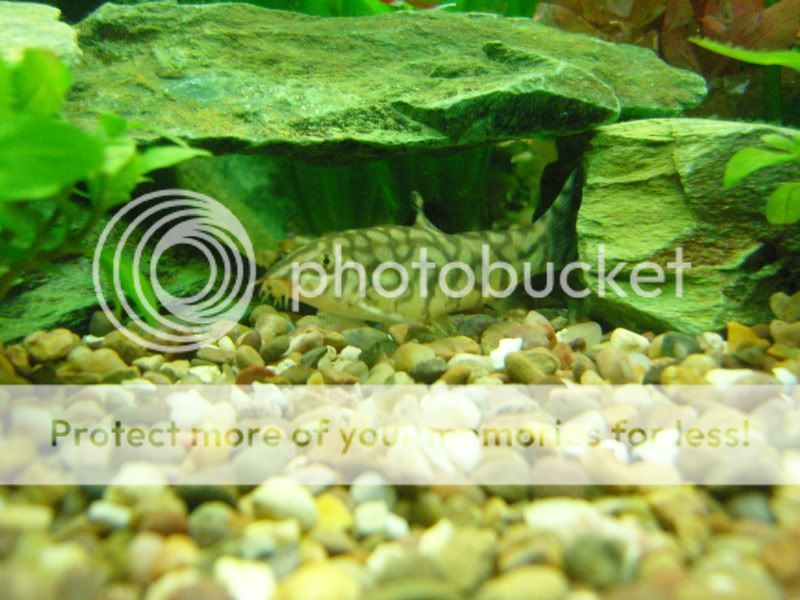onebto
Fish Herder
Common Name's: Pakistani Loach, Yoyo Loach.
Scientific Name: Botia almorhae.
Family: Cobitidae.
Origin: The Slow and still rivers and water ways of India namely Pakistan and Bangladesh.
Maximum Size: 5 to 6 inches in length in ideal and optimum conditions.
Care: Water requirements PH: 6.0 to 7.5, Hardness: Medium Max dh: <12, Temperature 23 to 27 degrees like most of the Loach family they Like a sand substrate or very fine and smooth gravel substrate. This Botia must be kept in a minimum group of 5 as they are a very social Botia and may suffer with less and thrive with more of there own kind. They need lots of hiding places to go and sulk in after social squabbles and love to hide under bog wood, They do prefer a subdued Lighting but will adapt to brighter tanks.They also prefer a more subdued water flow but will adapt and enjoy the addition of a good power head. The tank should be at least 70 Gallons but the most important thing is the length of the tank, 6 Ft or more is best as you will get to see the astonishing speed these great Loaches can swim at, Age expectations in optimum conditions are 10 to 15 years+.
Feeding: Get ready for a very greedy Loach so do not over feed them as they will not stop eating. They will eat almost anything I find they will eat flake food but they love sinking wafers of different variety's, Live and frozen food like blood worms, brine shrimp and daphnia go down a treat and I have found Muscles and shelled prawn's are a very fond favourite they will also eat most snails.
Sexing and Breeding: Adult females are slightly bulkier, males have reddish markings around the mouth. To my knowledge there has never been a successful breeding in captivity although the Adult females will on occasion fill with eggs.
Comments: This Botia is a hardy Loach that will supply endless hours of tank watching, they will squabble over food and hierarchy but are a wonderful addition to the larger community tank and will keep itself to itself and its own species.
Younger species:

Slightly older:

Scientific Name: Botia almorhae.
Family: Cobitidae.
Origin: The Slow and still rivers and water ways of India namely Pakistan and Bangladesh.
Maximum Size: 5 to 6 inches in length in ideal and optimum conditions.
Care: Water requirements PH: 6.0 to 7.5, Hardness: Medium Max dh: <12, Temperature 23 to 27 degrees like most of the Loach family they Like a sand substrate or very fine and smooth gravel substrate. This Botia must be kept in a minimum group of 5 as they are a very social Botia and may suffer with less and thrive with more of there own kind. They need lots of hiding places to go and sulk in after social squabbles and love to hide under bog wood, They do prefer a subdued Lighting but will adapt to brighter tanks.They also prefer a more subdued water flow but will adapt and enjoy the addition of a good power head. The tank should be at least 70 Gallons but the most important thing is the length of the tank, 6 Ft or more is best as you will get to see the astonishing speed these great Loaches can swim at, Age expectations in optimum conditions are 10 to 15 years+.
Feeding: Get ready for a very greedy Loach so do not over feed them as they will not stop eating. They will eat almost anything I find they will eat flake food but they love sinking wafers of different variety's, Live and frozen food like blood worms, brine shrimp and daphnia go down a treat and I have found Muscles and shelled prawn's are a very fond favourite they will also eat most snails.
Sexing and Breeding: Adult females are slightly bulkier, males have reddish markings around the mouth. To my knowledge there has never been a successful breeding in captivity although the Adult females will on occasion fill with eggs.
Comments: This Botia is a hardy Loach that will supply endless hours of tank watching, they will squabble over food and hierarchy but are a wonderful addition to the larger community tank and will keep itself to itself and its own species.
Younger species:

Slightly older:

